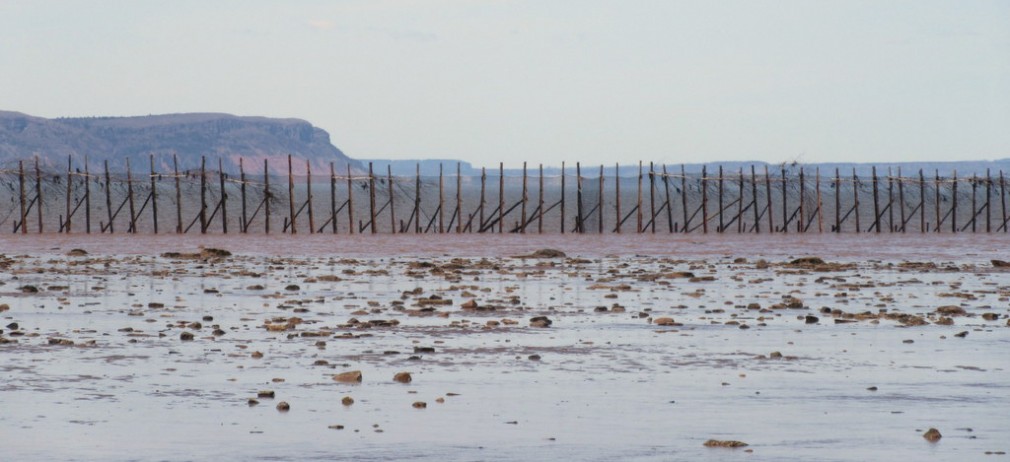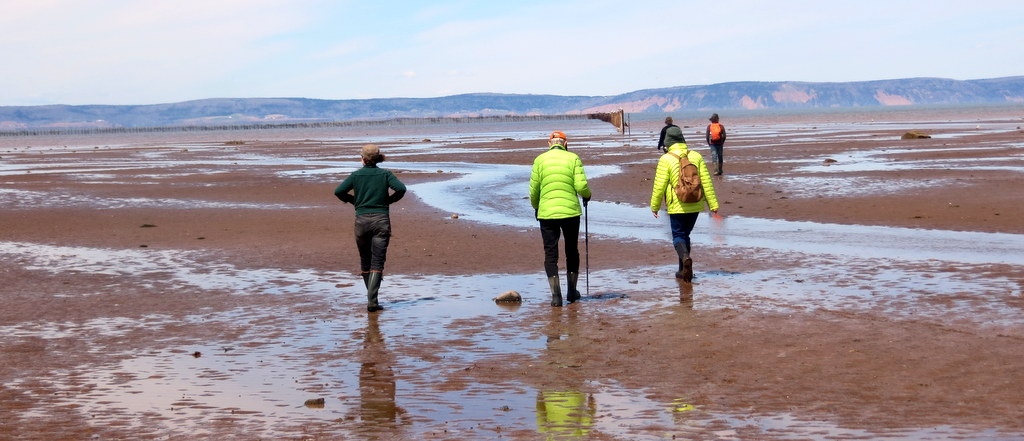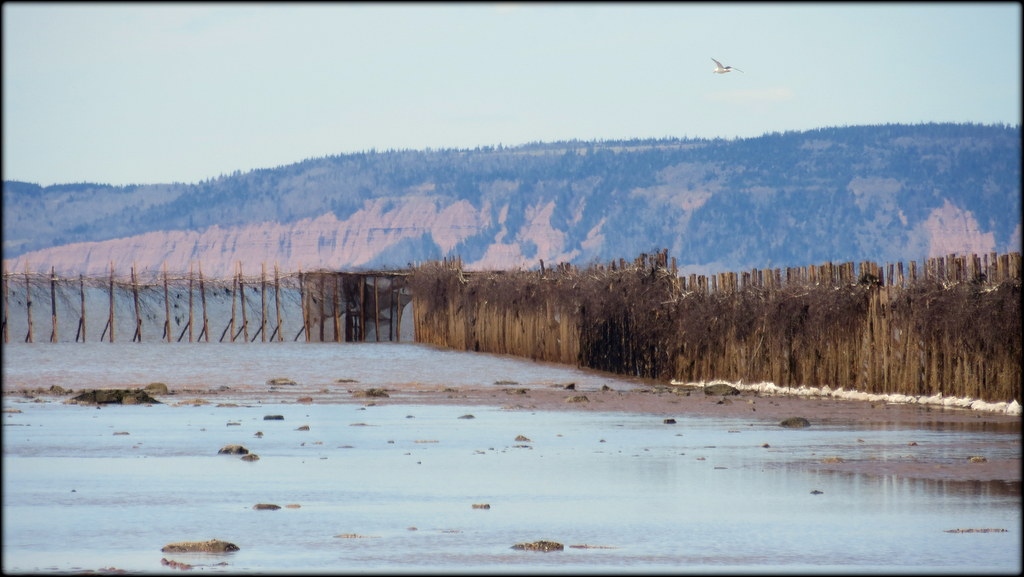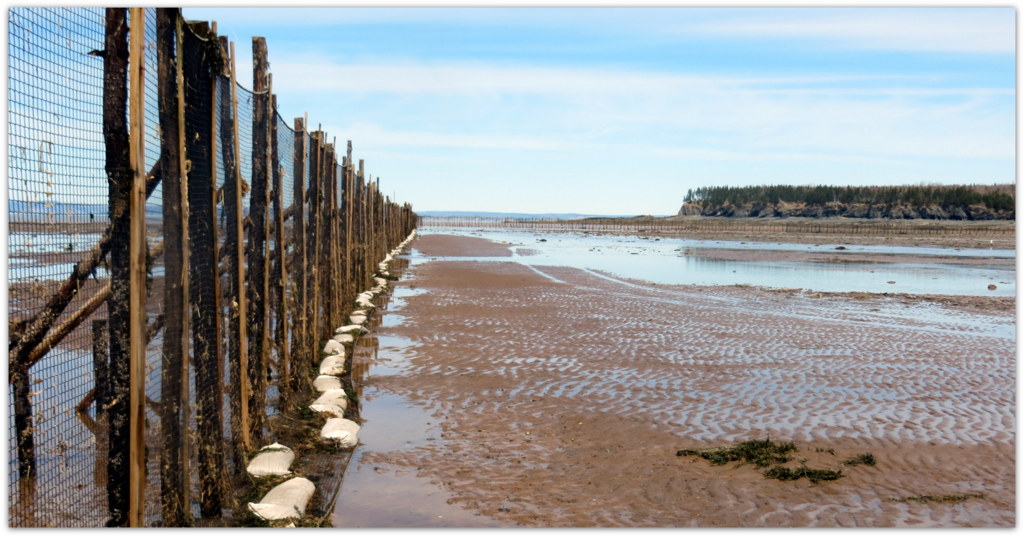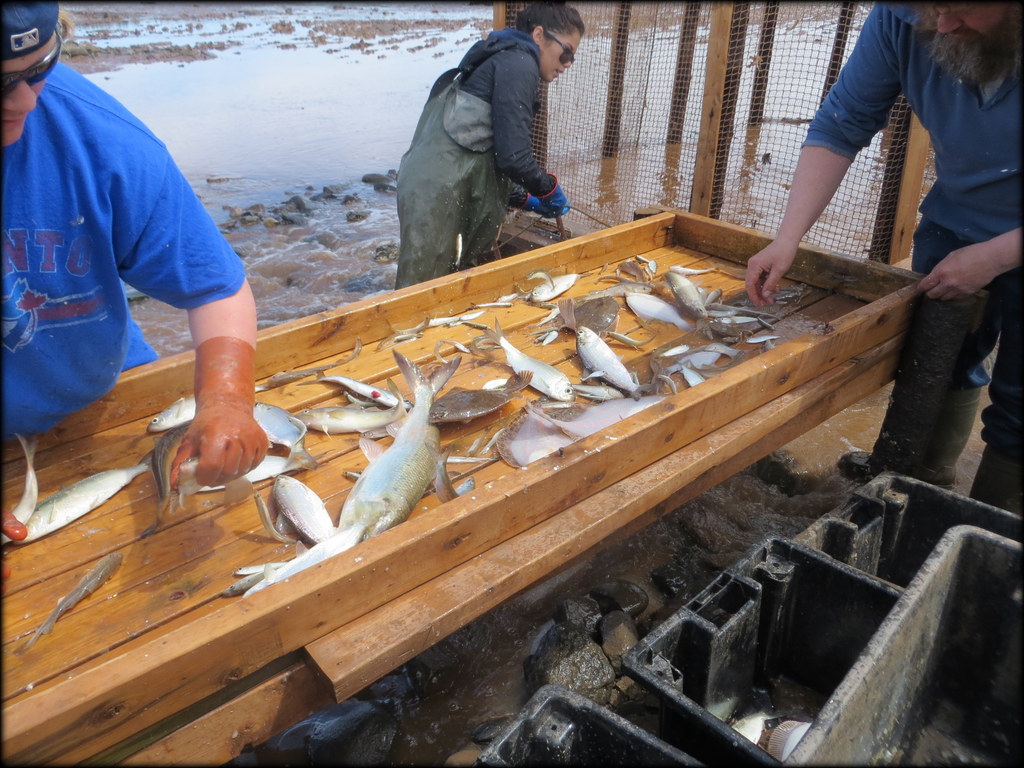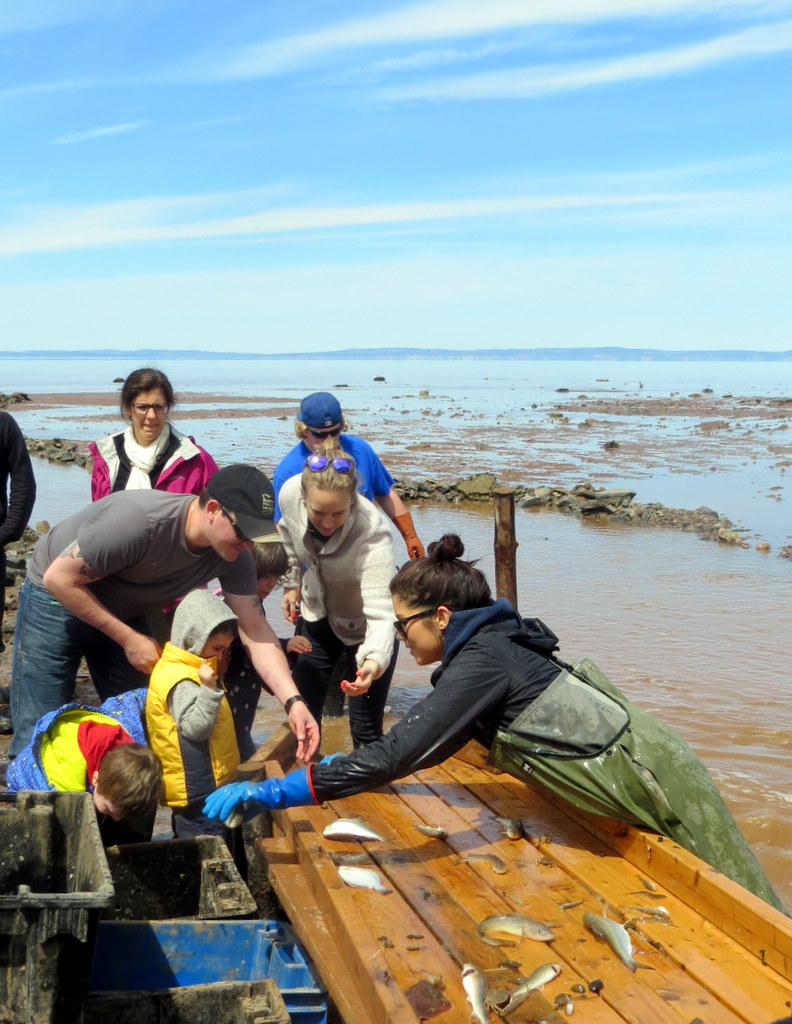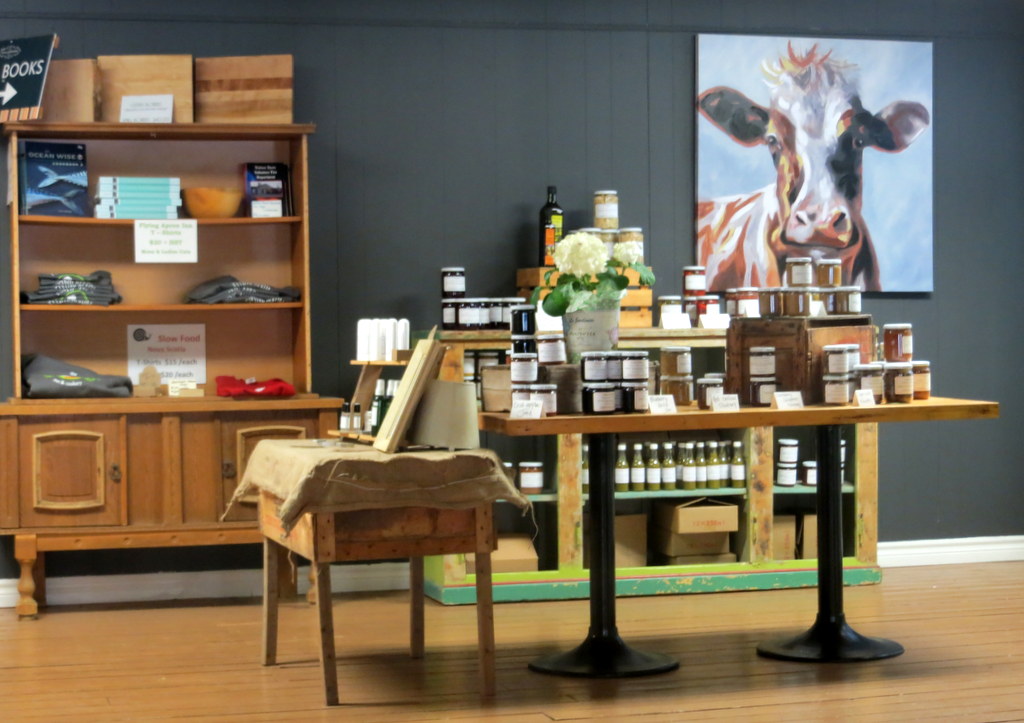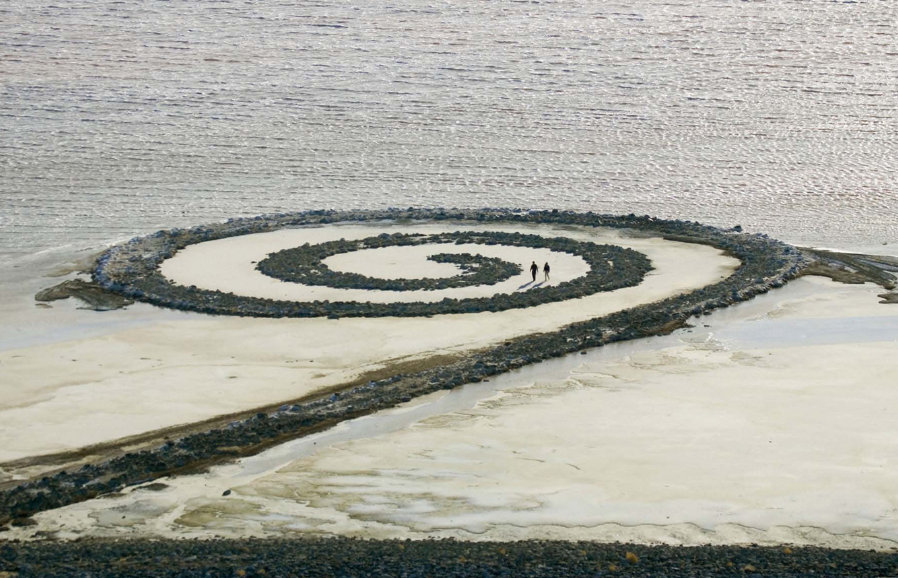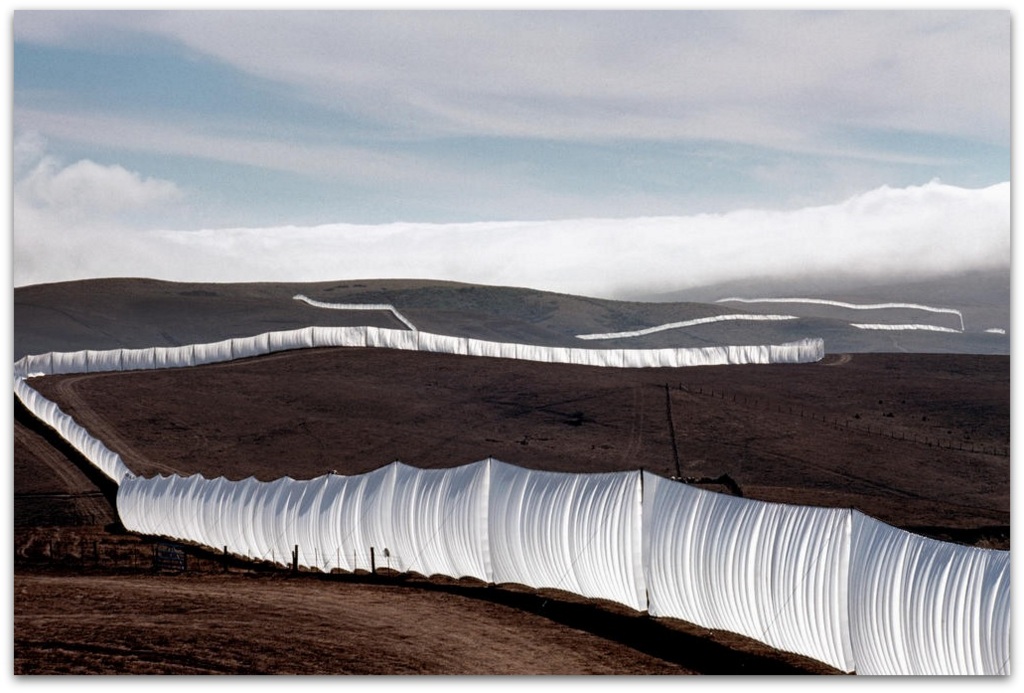Authentic, brag-worthy experiences are treasure in a world of virtual. We had one recently: walking on the ocean floor to witness fish captured using a millennia-old weir fishing technique. The adventure was organized by Afishionado, the folks who offer sustainably-caught seafood in Halifax. The weir was at Bramber on the shores of the Minas Basin where the tides of the Bay of Fundy reach their highest. Across the Basin, the familiar shape of Blomidon provided a backdrop.
As you can imagine, a weir visit depends on the tide, and when we started walking out to the nets the water was still receding. Very much a rubber boot experience.
As a child I saw too much quicksand in movies to feel safe out on these mysterious tidal mud flats without a guide.
The weir is two long lines of posts hung with nets. On a falling tide fish follow the underwater “fences” and end up trapped in a small corral.
The weir belongs to Darren Porter and he is passionate about his fishery and its sustainability. Here he explains the heritage of weirs. Hanna Nelson of Afishionado is to the left. At high tide there would be 40 feet of water over our heads. The weir fishes only the bottom 8 feet.
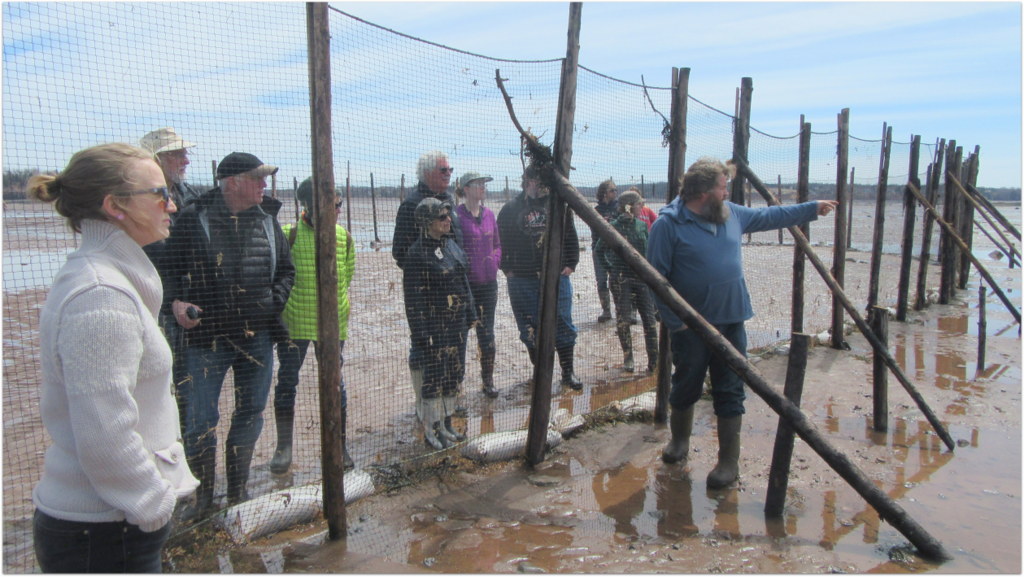
Photo: Sheila Stevenson
This was not the best fishing day but we saw gaspereau, herring, smelt, flounder, mackerel, tomcod and shad. They hope to catch about 300 pounds of fish a tide.
Darren’s daughter Erica is an active player in the fishery.
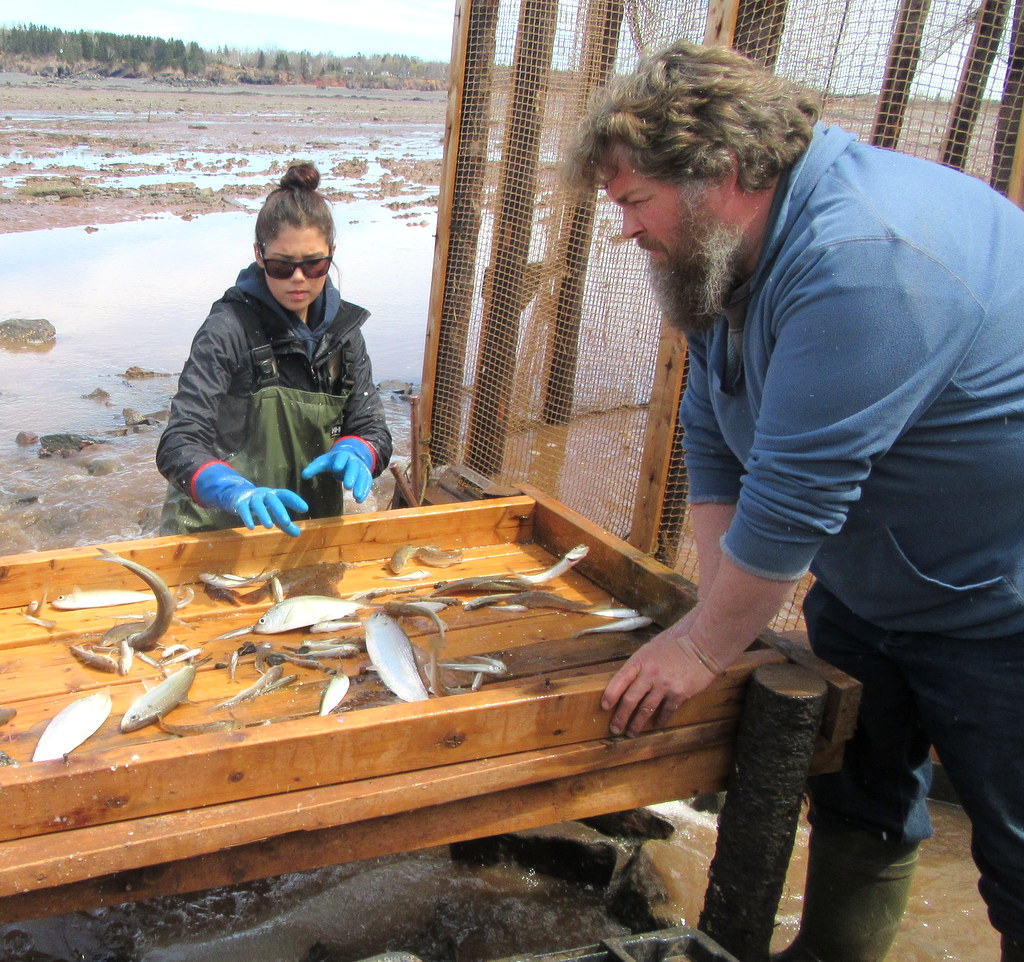
On the day we visited, the catch was going to be sold for lobster bait (while Darren was explaining the weir, an anxious lobsterman from PEI kept phoning).
Any fish that are not going to be harvested are diverted to a holding pond where they wait for the next tide. Large, prehistoric-looking sturgeon are regularly trapped but not kept (check out this video). A fin fishery with no bycatch is truly special.
Our visit was planned around a low tide about noon on what turned out to be a beautiful sunny day. The Porters and their crew tend the weir at every low tide – imagine being out there at 2:00am in a cold rain, sorting fish by the light of a headlamp.
We are members of Slow Food (Sheila is on the local executive). The group supports harvesting and production of food that is done sustainably, and the preservation of food traditions. The weir felt like a perfect example of Slow’s values: good, clean and fair. Afishionado regularly has weir-caught fish and we look for it on restaurant menus.
Postscript
- Darren has strong feelings about the planning for tidal power turbines and is powerful in expressing his concerns. If you haven’t heard him yet, you will.
- Before we visited the weir we ate a delicious brunch at Chris and Melissa Velden’s fine restaurant The Flying Apron, in nearby Summerville. It also has a bookstore, art gallery, shop, inn and cooking school. Definitely a destination. And they are offering a weir visit and picnic in August: see here.
- There is something wondrous about the geometry of the weir imposed on this strange landscape, covered with the highest tides in the world twice a day. Reminded me of some of the great earth sculptures of the last century. I have always been intrigued by Robert Smithson’s 1970 Spiral Jetty in Great Salt Lake, Utah.
And Christo and Jeanne-Claude’s sublime 1976 Running Fence in California.





